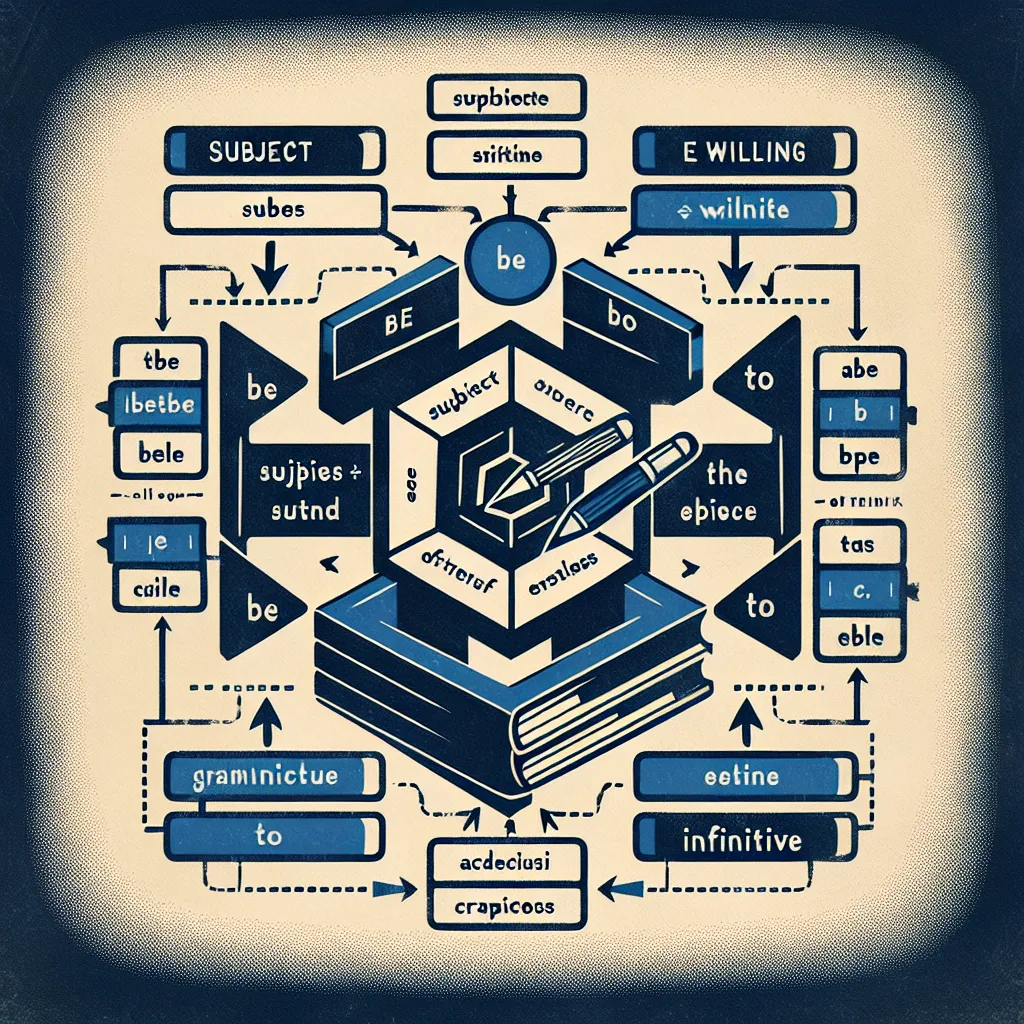The “be willing to + infinitive” structure is a crucial grammatical construct that frequently appears in IELTS exams. Understanding and effectively using this structure can significantly enhance your performance across various sections of the test. Let’s delve into its meaning, usage, and application in IELTS contexts.
Understanding the “Be Willing to + Infinitive” Structure
The phrase “be willing to + infinitive” expresses a readiness or voluntary disposition to do something. It’s commonly used to describe a person’s attitude or preparedness towards an action or situation. In IELTS, this structure can be particularly useful in Writing and Speaking tasks where you need to express personal opinions, intentions, or hypothetical scenarios.
Formula and Grammatical Analysis
The basic formula for this structure is:
[Subject] + [be] + willing + to + [base form of verb]
For example:
- I am willing to help.
- They are willing to cooperate.
- She was willing to compromise.
In these sentences, the subject is followed by a form of “be” (am, is, are, was, were), then “willing,” and finally “to” plus the base form of the main verb.

Application in IELTS Writing
In IELTS Writing, particularly in Task 2 essays, using “be willing to + infinitive” can help you express complex ideas and hypothetical situations effectively.
Example in an IELTS Writing Task 2 Essay:
Topic: Some people believe that individuals should take responsibility for their own health and fitness, while others think the government should play a more active role. Discuss both views and give your opinion.
Sample paragraph:
“While individuals should be willing to take responsibility for their health, governments also play a crucial role. Citizens need to be willing to make lifestyle changes and be willing to educate themselves about health issues. However, governments should be willing to implement policies that support healthy living, such as subsidizing gym memberships or being willing to invest in public health campaigns.”
Analysis: In this paragraph, the structure is used multiple times to express the readiness of both individuals and governments to take certain actions. This demonstrates a sophisticated use of language and helps to articulate different aspects of the argument clearly.
Enhancing IELTS Speaking Responses
In the Speaking test, using “be willing to + infinitive” can help you provide more nuanced and detailed responses.
Example in IELTS Speaking Part 2:
Question: Describe a time when you helped someone.
Sample answer:
“I’d like to talk about a time when I helped my neighbor move house. When I heard she was moving, I was willing to offer my assistance. Despite having a busy schedule, I was willing to dedicate my weekend to help her pack and transport her belongings. Throughout the process, I was willing to take on any task she needed help with, from lifting heavy furniture to organizing small items. This experience taught me the importance of being willing to go out of your way for others, even when it’s not convenient.”
Analysis: The repeated use of “was willing to” in this response emphasizes the speaker’s readiness and voluntary disposition to help, showcasing a range of vocabulary and grammatical structures.
Comparison with Other Structures
To achieve higher band scores in IELTS, it’s important to use a variety of structures. Let’s compare “be willing to” with similar expressions:
-
Be eager to: Expresses enthusiasm
Example: “I am eager to start the new project.” -
Be reluctant to: Expresses hesitation or unwillingness
Example: “He was reluctant to share his opinion.” -
Be prepared to: Indicates readiness or expectation
Example: “We are prepared to face any challenges.” -
Be inclined to: Suggests a tendency or preference
Example: “She is inclined to agree with your proposal.”
Using these variations can help you achieve a higher band score by demonstrating a broader vocabulary and more sophisticated language use.
Common Mistakes and How to Avoid Them
-
Incorrect verb form after ‘to’
Incorrect: “They are willing to helping.”
Correct: “They are willing to help.” -
Confusing ‘willing’ with ‘will’
Incorrect: “I will to assist you.”
Correct: “I am willing to assist you.” -
Omitting ‘to’
Incorrect: “We are willing work overtime.”
Correct: “We are willing to work overtime.” -
Using it with non-voluntary actions
Incorrect: “The sun is willing to rise in the east.”
Correct: “The sun rises in the east.”
Remember, “be willing to” implies a conscious choice or attitude, so it should only be used with actions that can be voluntarily undertaken.
Conclusion
Mastering the “be willing to + infinitive” structure can significantly enhance your IELTS performance. It allows you to express readiness, voluntary disposition, and complex ideas effectively. Practice incorporating this structure into your writing and speaking, along with other similar expressions, to demonstrate a sophisticated command of English grammar and vocabulary.
For further practice, try using this structure in essays about personal choices, societal changes, or professional development. These topics often require expressing willingness or readiness to take action, making them perfect for applying the “be willing to + infinitive” structure.